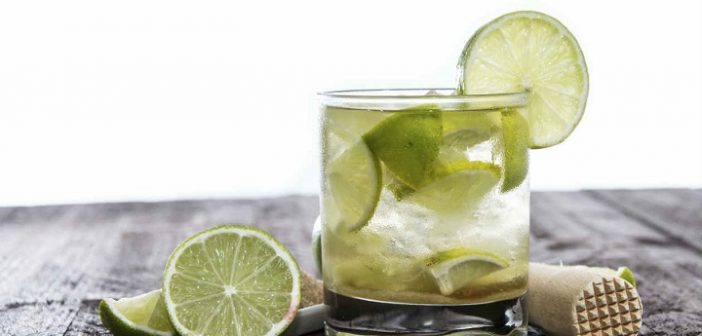Every country has its own famous distilled drink. In Brazil, it’s cachaça, or pinga, and it’s used do make one of the most famous cocktails in the world, the Caipirinha
There is no Brazilian who doesn’t know cachaça and there is no visitor to Brazil who doesn’t get to know it. Cachaça, along with Brazil’s intoxicating happiness, is the country’s trademark. Every Brazilian has affection for its strong aroma and potency.
Cachaça, however, is not to be drunk without respect. Its alcoholic content can vary from 38% to 48%, which is considerable when you think that a regular beer will rarely exceed an alcoholic content of 10%. That is why people say that drinking neat cachaça is only for the brave and the majority of people usually opt for a mixer, such as with the traditional “caipirinha” or the “rabo de galo” (translates quite literally as cocktail, “”galo” meaning “cock”, “rabo” meaning “tail” in Portuguese)!
No shortage of names
Cachaça is the one word in the Brazilian language with the most synonyms, nearly 2,000 in total, of which about 600 are in use today.
The history of cachaça
The Portuguese arrived in Brazil and began colonizing in 1500. Even before the end of the first century, cachaça was already being produced in Brazil given that the land was mostly used to harvest sugar cane for the production of sugar and black treacle, which were mostly sold to Europe. During the process of producing the sugar, when the juice of the cane ferments, it forms a type of foam. Initially this byproduct was never discarded, but given to domestic animals, cattle and pigs. With time, the slaves, who worked in the sugar cane mills, also began to receive rations, to be consumed while they worked. With improvements to the production process, the success of this cachaça amongst the slaves started to draw the attention of other, more refined consumers. With that, the production of a more superior cachaça began and Brazil started to export the drink to Europe, together with the other sugar cane based products.
Nowadays cachaça is produced in a variety of ways, from small distilleries, for mostly personal consumption, to the huge producers, whom have successfully industrialised production for both domestic consumption and export. There are, also, the midsize producers of special or “craft” cachaças, some of them internationally acclaimed, who target a select public of cachaça connoisseurs. Regular cachaças, sold almost anywhere in Brazil, only vary by the amount of sugar added during production, whilst special cachaças can be stored in wooden barrels or mixed with fruits or herbs to offer a differentiated taste.
Where to find cachaça in the UK
Today, there are two brands of cachaça that are mass exported to the UK: Cachaça Sagatiba and Cachaça Ypioca. Sagatiba is a lighter cachaça with almost no smell, whilst Ypioca is a more traditional blend, with a more potent smell and taste. Both have, for cachaça, a low alcoholic content of around 38% and 39% and can be found bought online or even in big supermarket chains, such as Sainsburys. So, if you fancy giving it a try, what are you waiting for?
Read more about Bossa Brazil Magazine (your Brazilian Magazine in London) and Bossa Latinos (Latin America culture in London) at BBMag, the only London-based trilingual publication specialised in international lifestyle, travel and tourism, culture, arts, gastronomy, food and drinks.
You can also find Brazilian and Latin American service suppliers and classifieds in London, and internationally, by visiting BBMAG Business Directory.
For more information about Brazil, travelling to Brazil, Holidays in Brazil and Brazilian tourism please also visit VBRATA Visit Brazil Travel Association.




